-
 bitcoin
bitcoin $122659.385674 USD
0.52% -
 ethereum
ethereum $4484.113342 USD
-0.09% -
 bnb
bnb $1304.229256 USD
-0.85% -
 tether
tether $1.000204 USD
-0.03% -
 xrp
xrp $2.860636 USD
-0.51% -
 solana
solana $227.288799 USD
2.36% -
 usd-coin
usd-coin $0.999805 USD
0.01% -
 dogecoin
dogecoin $0.252837 USD
1.18% -
 tron
tron $0.341149 USD
1.12% -
 cardano
cardano $0.830507 USD
0.33% -
 hyperliquid
hyperliquid $45.792319 USD
0.04% -
 chainlink
chainlink $22.422164 USD
1.55% -
 ethena-usde
ethena-usde $1.000283 USD
0.01% -
 sui
sui $3.511389 USD
0.83% -
 stellar
stellar $0.385276 USD
-0.44%
What is DeFi mining?
DeFi mining, akin to traditional mining, allows users to earn rewards by contributing liquidity to decentralized finance protocols, providing passive income and supporting DeFi project growth while potentially yielding high returns.
Oct 01, 2024 at 08:30 am
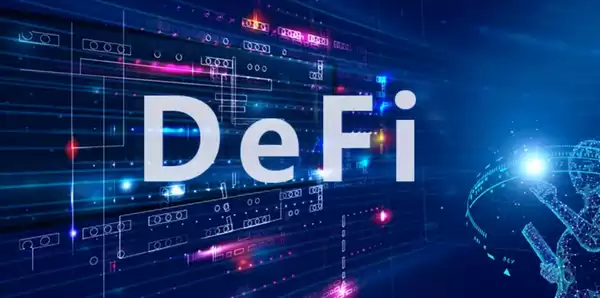
1. Overview:DeFi mining, also known as liquidity mining or yield farming, is a way to earn rewards by providing liquidity to decentralized finance (DeFi) protocols. It is analogous to traditional mining, where users contribute computing power to verify transactions and are rewarded with cryptocurrencies. In DeFi mining, users contribute liquidity to liquidity pools, which facilitate trading between different cryptocurrencies.
2. How DeFi Mining Works:When users provide liquidity to a liquidity pool, they usually deposit a pair of assets, such as ETH and DAI, into the pool. The pool then uses an automated market maker (AMM) algorithm to facilitate trading between the two assets. The more liquidity a pool has, the more stable the asset prices within the pool become. In return for providing liquidity, users are rewarded with the pool's native token or other incentives, such as governance tokens or trading fees.
3. Benefits of DeFi Mining:- Passive Income: Users can earn rewards while their assets are locked in the liquidity pool, providing a source of passive income.
- Support DeFi Projects: DeFi mining allows users to support and contribute to the growth of DeFi protocols by providing them with liquidity.
- High Returns: DeFi mining can offer significantly higher returns compared to traditional staking or holding crypto assets in a wallet.
- Smart Contract Risk: The smart contracts that govern DeFi mining platforms can contain bugs or vulnerabilities, which can lead to fund losses.
- Impermanent Loss: When the prices of the two assets in a liquidity pool diverge significantly, users may experience impermanent loss, which is a temporary loss of capital.
- Rug Pulls: Some unscrupulous DeFi projects may engage in rug pulls, where they withdraw the liquidity from the pool and leave investors with worthless tokens.
5. Choosing a DeFi Mining Pool:When selecting a DeFi mining pool, it is essential to consider factors such as:
- Safety and Security: Research the platform's security measures and track record.
- Liquidity Pairs: Choose pools with high trading volume and liquidity to minimize impermanent loss.
- Rewards and Incentives: Evaluate the types of rewards offered and their potential value.
- Community and Support: Check the project's documentation, online presence, and support channels.
Disclaimer:info@kdj.com
The information provided is not trading advice. kdj.com does not assume any responsibility for any investments made based on the information provided in this article. Cryptocurrencies are highly volatile and it is highly recommended that you invest with caution after thorough research!
If you believe that the content used on this website infringes your copyright, please contact us immediately (info@kdj.com) and we will delete it promptly.
- Charlie Lee, Litecoin, and Regret: A NY Perspective
- 2025-10-10 00:45:15
- Cryptocurrencies, Bitcoin, & Market Analysis: Navigating the New Financial Landscape
- 2025-10-10 00:45:15
- Algorand, Chainlink, and BlockDAG: Navigating the Crypto Landscape in 2025
- 2025-10-10 00:50:12
- Polymarket's POLY Token: Hype or the Next Big Thing?
- 2025-10-10 00:50:12
- Whitelist, Crypto, Utility: Decoding the Hottest Trends in Web3
- 2025-10-10 00:25:15
- Aster Price, Binance Fund, and Ecosystem Growth: What's the Buzz?
- 2025-10-10 00:25:15
Related knowledge

How to track DeFi activity on a block explorer
Sep 04,2025 at 05:36pm
Bitcoin's Role in Decentralized Finance1. Bitcoin remains the cornerstone of the cryptocurrency ecosystem, serving as both a store of value and a benc...

What is the difference between DeFi and CeFi? An article analyzing the advantages and disadvantages of both
Jun 13,2025 at 03:57am
Understanding the Foundations of DeFi and CeFiTo fully grasp the difference between DeFi (Decentralized Finance) and CeFi (Centralized Finance), it’s ...
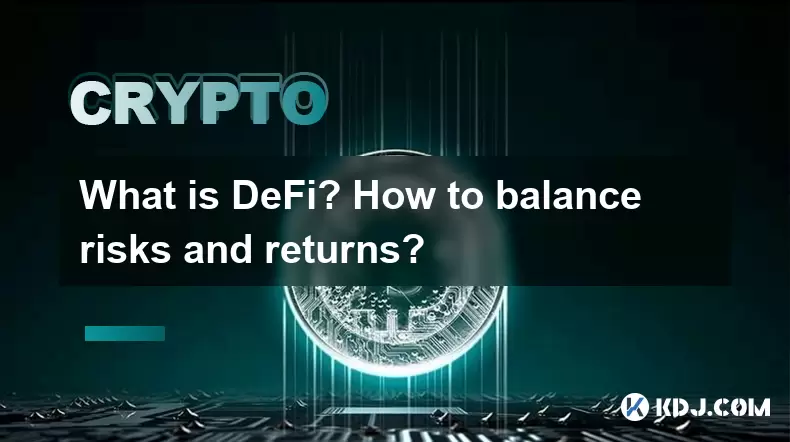
What is DeFi? How to balance risks and returns?
May 31,2025 at 12:22pm
What is DeFi? How to Balance Risks and Returns? Decentralized Finance, commonly known as DeFi, represents a revolutionary shift in the financial ecosy...
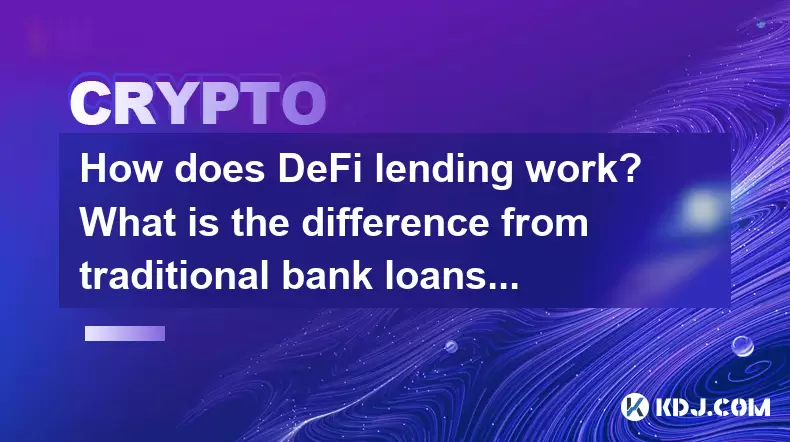
How does DeFi lending work? What is the difference from traditional bank loans?
May 29,2025 at 05:36pm
Introduction to DeFi LendingDeFi lending, or decentralized finance lending, represents a revolutionary shift in the way borrowing and lending are cond...
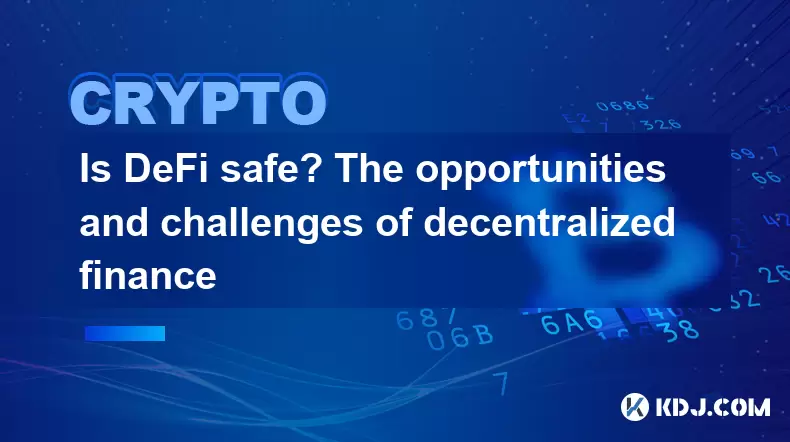
Is DeFi safe? The opportunities and challenges of decentralized finance
May 27,2025 at 02:28pm
Decentralized Finance, commonly known as DeFi, has revolutionized the financial landscape by offering a range of financial services without the need f...
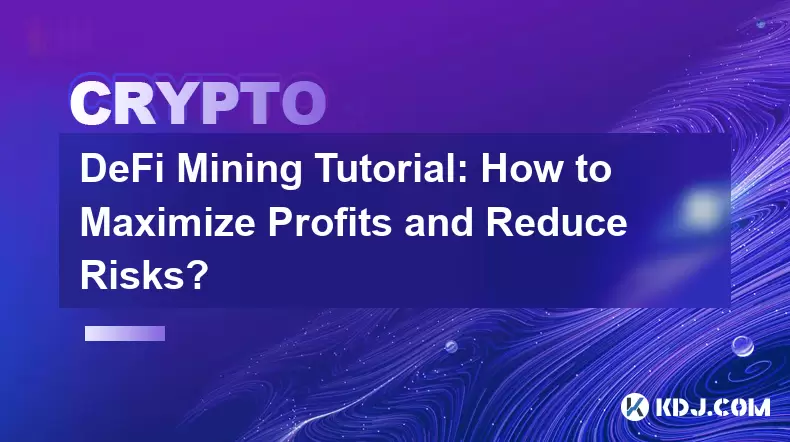
DeFi Mining Tutorial: How to Maximize Profits and Reduce Risks?
May 27,2025 at 07:42am
DeFi, or Decentralized Finance, has opened up a new world of opportunities for crypto enthusiasts looking to maximize their profits through various mi...

How to track DeFi activity on a block explorer
Sep 04,2025 at 05:36pm
Bitcoin's Role in Decentralized Finance1. Bitcoin remains the cornerstone of the cryptocurrency ecosystem, serving as both a store of value and a benc...

What is the difference between DeFi and CeFi? An article analyzing the advantages and disadvantages of both
Jun 13,2025 at 03:57am
Understanding the Foundations of DeFi and CeFiTo fully grasp the difference between DeFi (Decentralized Finance) and CeFi (Centralized Finance), it’s ...

What is DeFi? How to balance risks and returns?
May 31,2025 at 12:22pm
What is DeFi? How to Balance Risks and Returns? Decentralized Finance, commonly known as DeFi, represents a revolutionary shift in the financial ecosy...

How does DeFi lending work? What is the difference from traditional bank loans?
May 29,2025 at 05:36pm
Introduction to DeFi LendingDeFi lending, or decentralized finance lending, represents a revolutionary shift in the way borrowing and lending are cond...

Is DeFi safe? The opportunities and challenges of decentralized finance
May 27,2025 at 02:28pm
Decentralized Finance, commonly known as DeFi, has revolutionized the financial landscape by offering a range of financial services without the need f...

DeFi Mining Tutorial: How to Maximize Profits and Reduce Risks?
May 27,2025 at 07:42am
DeFi, or Decentralized Finance, has opened up a new world of opportunities for crypto enthusiasts looking to maximize their profits through various mi...
See all articles


























![🚨IS VECHAIN (VET) A DEAD COIN ?? PRICE ANALYSIS [GET READY NOW] 🚨IS VECHAIN (VET) A DEAD COIN ?? PRICE ANALYSIS [GET READY NOW]](/uploads/2025/10/09/cryptocurrencies-news/videos/vechain-vet-dead-coin-price-analysis-ready/68e7b200b067b_image_500_375.webp)















































